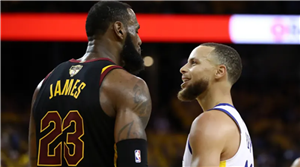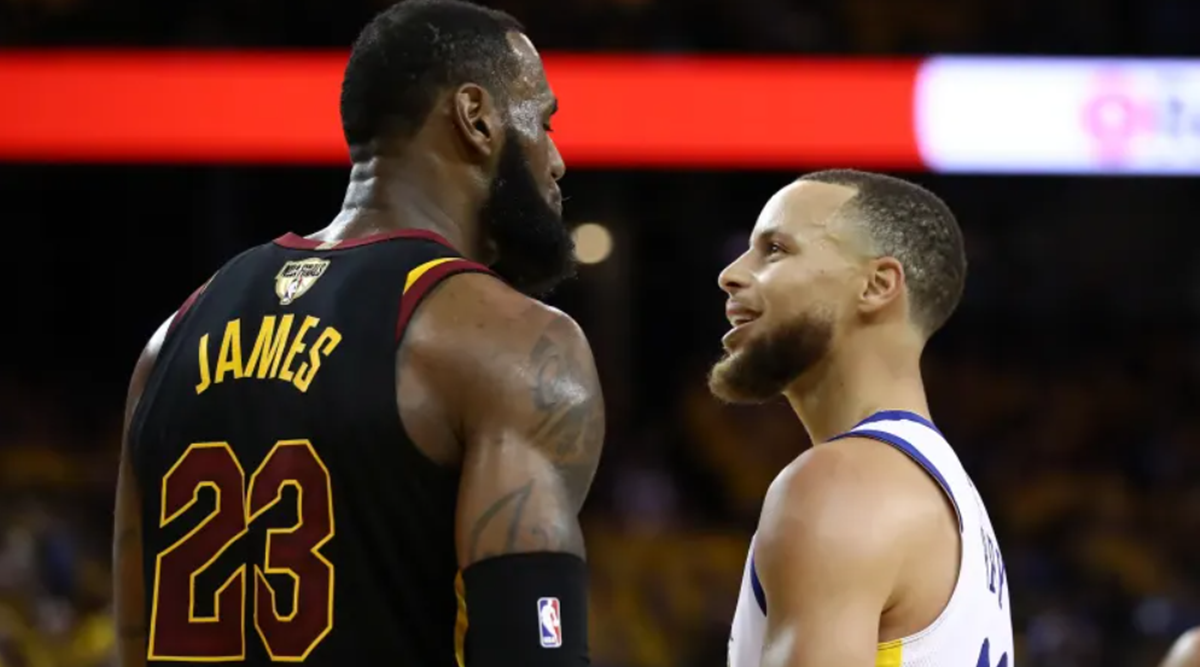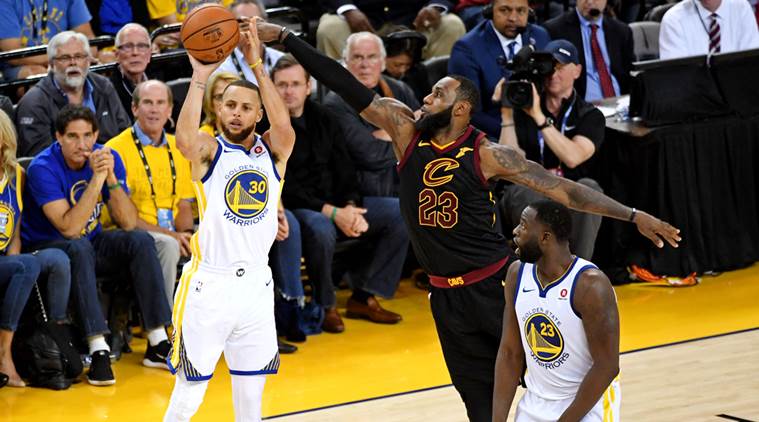The Golden State Warriors won the 2014-15 NBA finals, beating Cleveland Cavaliers. It came on the back of Steph Curry's incredible efficiency from three-point range, as the Warriors played a 'small ball lineup' to ensure the beginning of their era.
Amidst the praise for budding stars that turn into ageless sporting wonders, the games themselves snuck in makeovers and strategies and started looking different. And then you WONDER WHY it happened. The Indian Express explores this evolution.
—————————————————————————————————
There was a pivotal moment in the Houston Rockets-LA Lakers matchup during the 2020 NBA playoffs. The Lakers curiously gave lesser minutes to Dwight Howard and JaVale McGee – two of their centres. The answer to Houston Rockets – who under Mike D’Antoni had tried to create the perfect small-ball line-up – came in the form of Anthony Davis, a sort of cheat code to apply against teams playing the style perfected by the Golden State Warriors that catapulted the Oakland team from perennial losers to the bane of superstars, general managers and franchises wanting to win a chip. Anthony Davis is the answer to small-ball in 2020 – just as Stephen Wardell Curry was (and still is) the answer to centres in the early 2010s.
By the look of their team the Warriors, sans Klay Thompson this season, may be out of championship contention, but the positionless basketball revolution that they engineered, changed the NBA forever. And at the heart of it was Steph Curry and his three-point shot.
Imagine a wiry six-feet-three point guard being chased by a towering seven-foot centre. In basketball that matchup was always skewed in favour of the towering centre. It would force guards to pass the ball or better yet, shoot — rather than dribble to the basket and score a layup. That would mean taking a shot farther away from the basket which in turn increases the probability of the basket not being made. It was either that or get swatted away at the rim should the thought of a layup come to mind. Historically the NBA began as a big man’s game but skill is the only currency that goes in basketball’s modern-day iteration.
Now what if the guard was the greatest shooter of all time? Not just in the accuracy of the shots but the sheer volume of snipes taken, tactically ripping the opposing team apart.
Curry’s three-point shot
The idea of a three-point shot wasn’t rocket science to the NBA. Players like Ray Allen and Reggie Miller were three-point shooting stalwarts — who currently are 1st and 2nd in the all-time three-pointers made list. Steph Curry is fast snapping at their heels and in far fewer games played than these two. Why? Because of the sheer volume of 3s the Warriors guard makes. Up until the 2012-13 season Ray Allen held the record for most 3s in an NBA season, making 269 snipes. Then came Curry who tallied 272. Normally that would be the zenith of an NBA player’s shooting, but the greatness of Curry is such that he broke his own record of 272 in his unanimous MVP season, rampaging 402 three-pointers, improving his own record by a mind-boggling 116 3s. When no player in the history of the NBA had gone above 270, Curry came in and blew the roof of the shed. And his 402 3s came with him taking 886 shots — shooting at 45.3%.
Something else followed — he allowed the Warriors to play small ball.
Most teams that have tried to field small ball line-ups have rarely been successful deep into the NBA’s playoffs. That was, until the Golden State Warriors, a team known for its historic failures, chose Steph Curry, Klay Thompson and Draymond Green over the space of a few years in the NBA draft.
Why did it work?
Usually in the NBA, generational shooters come just as the word goes — in a generation. And then the Warriors drafted Steph Curry and Klay Thompson — two shooters who will go down as the best in the game when they decide to stop lacing their sneakers. Add to that a six-foot-seven undersized power forward in Draymond Green who is comfortable defending all five positions on a basketball court — from a point guard to the centre — and you suddenly have the makings of something special.
The true manifestation of Curry’s potential was unlocked when the Warriors unleashed what is now famously referred to as the ‘Death Lineup’. By flanking Curry’s shooting genius with four two-way players – players who could both score buckets and then defend multiple positions, the Warriors were unstoppable in the playoffs. No player in the first iteration of the death line-up was above six-feet-eight. And the Death Lineup wasn’t used all the time. But if there was a particularly tough player to guard, or a team that was scoring big, the five-man line-up of Curry, Thompson, Andre Iguodala, Harrison Barnes and Draymond Green was devastating.
In the 2015-16 season, the Warriors won 73 regular season games — an NBA record. At the heart of it were these incredible stats. The Warriors played their Death Lineup for 172 total minutes in the regular season. They outscored their opponents by 47 net points per 100 possessions in those minutes. In a league where the average team hit near-about 35 percent of their three-point shots, the Warriors’ Death Lineup was shooting 53.4% from 3s. Defensively, the Warriors in the 2015-16 season held teams to 95 points per 100 possessions in the regular season.
The Draymond Green-Steph Curry pick-and-roll in particular was draining for an opposition team. The pick and roll allowed Green to switch the centre trailing him onto Curry. Curry in turn could now use his pace to blow past a taller player incapable of moving back to the rim that fast. If in case an opposition team managed to play a fast centre who could switch between positions, Curry would pass back the ball to Green, who now had a size advantage over the guard who was earlier guarding Curry but was now onto him after the switch. The Warriors constantly looked for mismatches in size and routinely took advantage of targeting opposition players who were weak defenders.
It was this manifestation of the Death Lineup, coupled with the historic shooting numbers put up by Curry that changed the landscape of the game. It forced teams to think outside the box, form line-ups of their own that could counter the Warriors and challenge a system that seemed impossible to beat — especially after the Warriors added Kevin Durant at the end of the 2016 season and won two more titles with the 2013-14 MVP.
Small ball teams today
Just as Curry was instrumental in making the little guy relevant with his once-in-a-generation level talent, the answer to his skill set was right along there in the form of Anthony Davis. The seven-footer, who had a late growth spurt, played most of his adolescent basketball as a guard and when his growth spurt hit, it suddenly made his skill – at that monstrous size – one of the most appealing physical aspects for NBA teams.
When the Lakers committed fully to playing Davis at the five – it was the same level of commitment that the Warriors were willing to make when they played Draymond at five in the hopes that Curry and Thompson’s three-point shooting would engulf anything that came in their way.
Curry may not have the team this year to challenge for the NBA title – but a good regular season showing might see them meet the Lakers in the Western Conference playoffs and the greatest challenge against a small-ball line-up could take stage against the team that perfected it.
Source: Read Full Article



